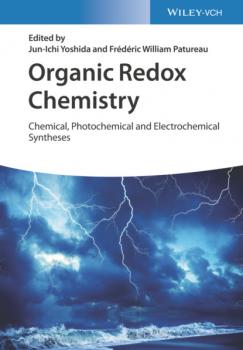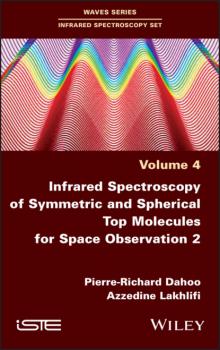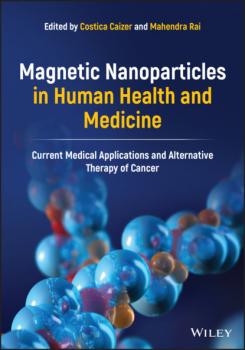ТОП просматриваемых книг сайта:
Химия
Различные книги в жанре Химия, доступные для чтения и скачиванияInfrared Spectroscopy of Symmetric and Spherical Top Molecules for Space Observation, Volume 2 - Pierre-Richard Dahoo
Аннотация
This book, Volume 4 in the series, is dedicated to the relationship between laboratory spectroscopy, recording ever-more-complex spectra using increasingly powerful instruments benefiting from the latest technology, and the development of observation using instruments that are embedded in mobile probes or nanosatellites.<br /><br />The theoretical models described in Volumes 1, 2 and 3 are used in this volume, applying the cumulant theorem in the mean-field theory framework to interpret the near and mid-infrared spectra of symmetric top molecules, such as ammonia (NH3) and spherical molecules, such as methane (CH4). These molecules can be isolated in their gaseous form or subjected to the environmental constraints of a nano-cage (a substitution site, clathrate, fullerene or zeolite) or surfaces.<br /><br />These methods are not only valuable in the fields of environmental sciences, planetology and astrophysics, but also fit into the framework of data processing and the concept of Big Data.
Аннотация
В пособии излагается материал по химии белков: переваривание, пути распада аминокислот, пути обезвреживания аммиака, значение в клинике определения мочевины в сыворотке крови. Рассматриваются пути образования и обезвреживания биогенных аминов (гистамин, серотонин, ГАМК, катехоламины). Очень важные вопросы для клиники – креатин, креатинин, обмен тирозина в разных тканях. Подробно разбирается обмен нуклеопротеинов и хромопротеинов, подагра, порфирии, желтухи. Последняя часть посвящена матричным биосинтезам нуклеиновых кислот и белка. Данное пособие иллюстрировано графиками, таблицами, схемами. Представляет интерес для студентов медицинских ВУЗов по специальностям лечебное дело, стоматология и др. А также для ординаторов, аспирантов и врачей интересующихся биохимией. Данное учебно-методическое пособие подготовлено в соответствии с Федеральным государственным образовательным стандартом третьего поколения.
Аннотация
В пособии излагается материал по химии белков: переваривание, пути распада аминокислот, пути обезвреживания аммиака, значение в клинике определения мочевины в сыворотке крови. Рассматриваются пути образования и обезвреживания биогенных аминов (гистамин, серотонин, ГАМК, катехоламины). Очень важные вопросы для клиники – креатин, креатинин, обмен тирозина в разных тканях. Подробно разбирается обмен нуклеопротеинов и хромопротеинов, подагра, порфирии, желтухи. Последняя часть посвящена матричным биосинтезам нуклеиновых кислот и белка. Данное пособие иллюстрировано графиками, таблицами, схемами. Представляет интерес для студентов медицинских ВУЗов по специальностям лечебное дело, стоматология и др. А также для ординаторов, аспирантов и врачей интересующихся биохимией. Данное учебно-методическое пособие подготовлено в соответствии с Федеральным государственным образовательным стандартом третьего поколения.
Аннотация
Explores the application of magnetic nanoparticles in drug delivery, magnetic resonance imaging, and alternative cancer therapy Magnetic Nanoparticles in Human Health and Medicine addresses recent progress in improving diagnosis by magnetic resonance imaging (MRI) and using non-invasive and non-toxic magnetic nanoparticles for targeted drug delivery. Focusing on cancer diagnosis and therapy, the book covers both fundamental principles and advanced theoretical and experimental research on the magnetic properties, biocompatibilization, biofunctionalization, and application of magnetic nanoparticles in nanobiotechnology and nanomedicine. Chapters written by a panel of international specialists in the field of magnetic nanoparticles and their applications in biomedicine cover magnetic hyperthermia (MHT), MRI contrast agents, biomedical imaging, modeling and simulation, nanobiotechnology, toxicity issues, and more. Readers are provided with accurate information on the use of magnetic nanoparticles in diagnosis, drug delivery, and therapeutics—featuring discussion of current problems, proposed solutions, and future research directions. Topics include magnetic nanoparticles with antioxidant activity, iron oxide nanoparticles in nanomedicine, superparamagnetic hyperthermia in clinical trials, and simulating the physics of magnetic particle heating for biomedical applications. This comprehensive volume: Covers both general research on magnetic nanoparticles in medicine and specific applications in cancer therapeutics Discusses the use of magnetic nanoparticles in alternative cancer therapy by magnetic and superparamagnetic hyperthermia Explores targeted medication delivery using magnetic nanoparticles as a future replacement of conventional techniques Reviews the use of MRI with magnetic nanoparticles to increase the diagnostic accuracy of medical imaging Magnetic Nanoparticles in Human Health and Medicine is a valuable resource for researchers in the fields of nanomagnetism, nanomaterials, magnetic nanoparticles, nanoengineering, biopharmaceuticals nanobiotechnologies, nanomedicine,and biopharmaceuticals, particularly those focused on cancer diagnosis and therapeutics.










